SEARCH






|
|
|
|


by Editor Yan Zhang
From a certain perspective, mountain photography presents an ultimate challenge for a photographer. In addition to fulfilling all kinds of essentials for creating a standout photograph: such as technical perfection, personal creativity, and proper weather and light conditions, mountain photography also demands a great deal of physical and mental effort from the photographers.
Quite often a multiple-day backpacking trip to a remote place is needed for every serious mountain photography action. In the mean time, frustration for unpredictable weathers, disappointment for poor outcomes, and even struggling for survival often interwoven together, which eventually tests the photographer’s utmost endurance and determination. For this reason, I always pay my special respect to mountain photographers.
Mei Xu is such a fellow photographer I truly respect. Mei’s photography started with the mountain landscape. During her photography journey, Mei has not only produced many stunning and original mountain images, she had also proved her strong persistence in pursuing her dreams of mountain photography.
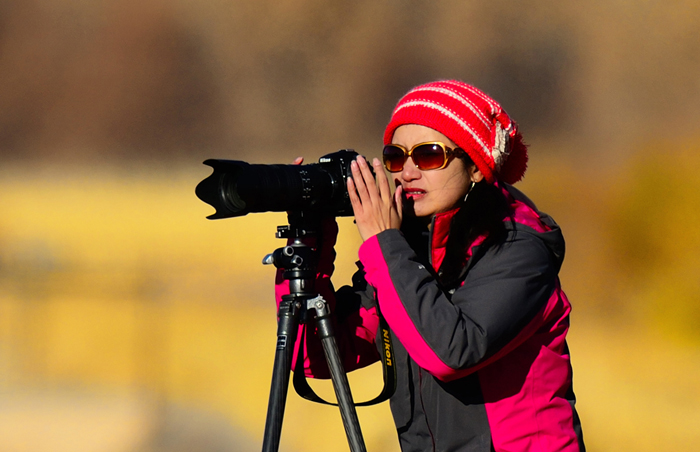
Landscape Photographer Mei Xu
I first met Mei back in 2012, when we had a photography expedition together to the Canadian Rocky Mountains. In that two-week trip, I learned more about Mei’s photography concepts and ideas. Our collaboration has continued since then. In the past few years, we have also travelled together to New Zealand and Patagonia in pursuit of landscape photography.
Living in Colorado provides Mei unique opportunities to explore the mountains. Over the years, Mei’s exploration of the Colorado Rockies has greatly extended from well-known iconic places such as Maroon Bells, to some remote and unnamed destinations where only a hard-trekking trip can reach.
Mei is a sharp observer in her photography. She has a great instinct to discover something unique and appealing. From time to time, I was often amazed by Mei’s unique vision that translates into some very aesthetic images. Mei’s images look simple but are incredibly impressive, such as Photo 5 Winter Blossom, for instance. On the other hand, her grand mountainscape photographs usually illustrate some ethereal, dreamlike yet authentic natural beauty, as shown in Photos 3 Carpet of Wild Flowers and Photo 8 Colorado Paradise. Mei once told me that she did not like to repeat others’ composition even if that was a classic location for shooting well-known landscape scenery. I believe that this is probably the most important characteristic for a photographer to be original and creative.
Coming into 2017, Mei Xu took off on her journey for Drone Photography. By mastering this new technology, Mei has creatively added a new dimension to her landscape photography from the sky. Photos 9, 12 and 14 below, for example, illustrate some very unusual and beautiful scenes that we could never see from the ground. Mei’s fresh and stunning drone images have inspired me to also take part into this new photography genre.
In this interview, we will have an opportunity to learn more about Mei Xu as a landscape photographer, her stunning images, photography philosophy, and outdoor adventurous stories including a life-saving mountain experience. All these I believe will be a great inspiration for many of us.
Hi Mei, glad to catch up with you again. It has been more than 10months since we met each other in 4Aperture’s Shanghai Photography Exhibition in early 2017. I know that you have had a lot of new photography activities in the past ten months, and I am sure our 1X audience would be very interested to know your new works.
But to begin with,would you tell us something about yourself? Where do you live and what is your current occupation? What sparked your interest in photography?
I know your main photography works landscapes. Do you have particular interests and focuses for your landscape photography?
Hi Yan, it was nice meeting you and other members of 4aperture in Shanghai. We had a very good time during the ceremony of the photography exhibition in January. Time is flying. I couldn't believe there are less than two months left in 2017.
Yes, I am still taking pictures on weekends and on vacation while working on my research project on molecular biology during the weekdays. I started taking photos using DSLR camera about 10 years ago. For the first few years I loved taking pictures of almost everything, from portrait to wild animals, from backyard to street. After a while I realized that I didn't like to stay in studios for portrait photos and I wasn't brave enough to wander the street for street photography. I also realized that I am not muscular enough to hold a huge lens for shooting wild animal images. I love wild flowers on the mountains more than flowers in the garden. For all these various reasons, I started focusing on my most favourite subject – landscape photography.
As mentioned on my website, when I am travelling, hiking and skiing, my camera is my third eye to explore the wonder of the world and to capture the beauty of nature. As a resident of colourful Colorado, I can easily visit many mountains and wilderness regions within a few hours of driving. Mountains and lakes of course became my major shooting subjects.
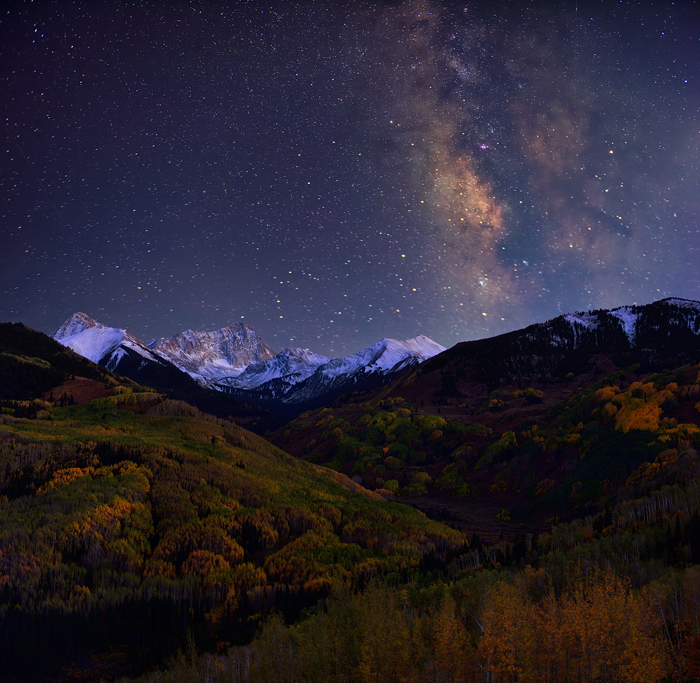 "Autumn Night” by Mei Xu
"Autumn Night” by Mei Xu
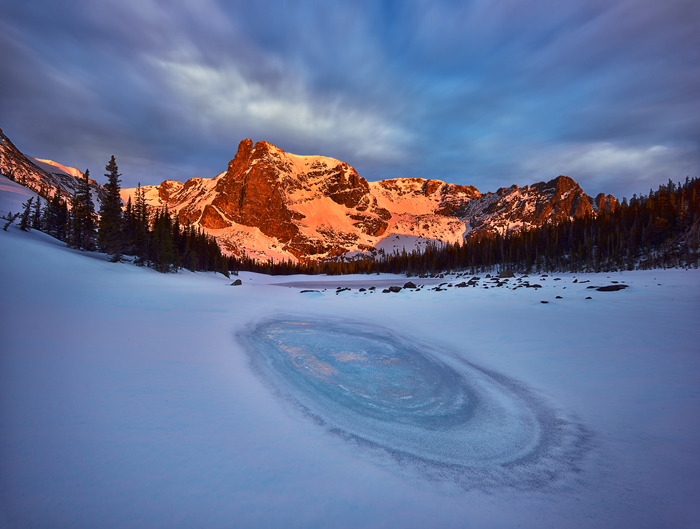 "Notchtop Mountain Sunrise” by Mei Xu
"Notchtop Mountain Sunrise” by Mei Xu
Would you like to talk about your photography philosophy? How do you describe your photography style? May you provide some examples that reflect your personal vision and photography style?
Elliott Erwitt said: "Photography is an art of observation. It has little to do with the things you see and everything to do with the way you see it".
It is so true. The ability of observation, imagination and creativity are very important for a landscape photographer. I believe landscapes are treasures of Mother Nature. They are everywhere. Some of them have been discovered by pioneering photographers. Following photographers’ footsteps and copying their works is easy. However, I like to dig and search for my own treasures. It is more challenging but also more fun, and it gives me more of a sense of achievement.
My major subjects are mountains. I like to use wide angle lens to include some interesting foregrounds that tell stories about the mountains. The light also plays an important role in my images. I think the presence of light motivates me to hunt for the beauty. No matter how many hours of homework I do at home,in the field, I always follow the light. Two pictures below were taken at the same location. In my original plan, my lens should point towards the lake, but then something unexpected happened. I followed the light, turned my camera around and quickly found another composition to capture the moment.
I have noticed that your photography subjects are quite broad – from grand landscapes to fine natural elements. “Dreamscape” seems to be your photography vision. May you explain your dreamscape concept?
Among many of your photography works, some images were captured from extraordinary perspectives, like the following “Winter Blossom”.
I believe that to capture such images, a photographer needs to be very creative, as well as having the capability for observing subtle details, which often is neglected by many photographers. Would you share with us your experience on how to take this kind of photographs?
There is a Chinese proverb: what you think during the day time will enter your dreams at night. I love travelling and I also dream of travelling quite a bit. In my dreams, I witness many fantastical types of scenery which I always try to capture. Most of the time, due to dead batteries or a camera malfunction my attempts to capture these scenes in my dreams fail. Thankfully these incidents are not real. In the real world, I always attempt to find dreamlike landscapes. They could be ethereal, boundless, vague, surreal, bluish and moody etc.
Regarding the "Winter Blossom" photo, I was very lucky to get this image. I remember I was heading to the ski resort for skiing that day; because traffic was so terrible, we turned around and went to Rocky Mountain National Park for snow shoeing instead. This image was taken at Dream Lake in RMNP. It was in the afternoon; the light was not suitable for grand landscape shooting, so I focused on the surface of the frozen lake hoping to find some interesting ice crack patterns. At the very beginning, I attempted to use the tripod for each shot, but soon after I discovered it was too cumbersome and too difficult to adjust the angles on the tripod under a 40mph wind on ice.
The surface of lake was also so slippery and the wind was blowing so hard that I wasn’t even able to stand still. With such harsh conditions, I decided to give up the tripod and just hand held the camera to start looking and shooting. While walking with snowshoes on the frozen lake, I found some patterns similar to those I have seen on the internet. I was not very excited about them because the patterns of bubbles under the ice were not as nice as I expected.
I kept searching, by sheer luck, I finally spotted this tree pattern. At first glance, I just saw "branches", but when I walked to the other side of the cracks, I smiled. Wow, it was not only tree-like cracks, the tree was actually blooming. This was such a unique pattern that I had never seen or would have thought it was possible. Even though it was extremely cold, the blooming tree made me feel that spring was here. That is the exciting part of finding your own treasures. I took the shot with f 8.0 to get enough DOF (depth of field); 1/80s, fast enough for hand-held shooting with 24-70 mm lens and ISO 200 to minimize noises. It was an easy shot but wasn't easy to find. Since then I have been back to this lake several times but have been unable to find any patterns that I consider more interesting than this one. Another shot "Macarons" (photo 6) was also taken from a frozen lake. I was hungry at the time, so when I saw this pattern, I immediately thought about macarons. The golden aspects in “macarons” were the reflections from the mountain nearby with alpenglow. This only happens at very specific angles within a very short time frame.
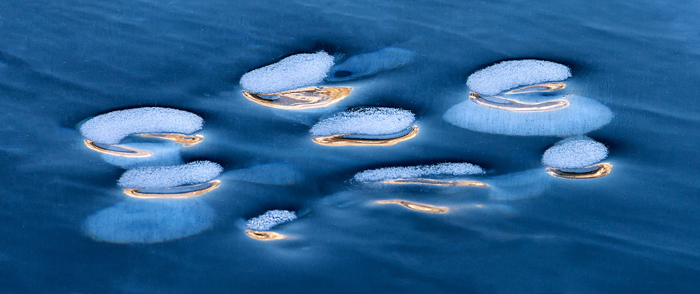 “Macarons” by Mei Xu
“Macarons” by Mei Xu
I know you are based in Colorado – a state of mountains in United States. Many of your photography activities have been undertaken in Rocky Mountains in Colorado, where outdoor adventures with hard hiking and backpacking are essential in order to get to the places you want to photograph.
In your view, what kinds of photography opportunities are present in these mountainous locations? What are your general ideas of taking photographs in Rocky Mountains?
May you share with us one of your most special adventurous mountain photography experiences in Colorado?
The Colorado Geological Survey says there are 58 peaks that exceed 14,000 feet in elevation in Colorado. We call those peaks as 14ers. There are also hundreds of 13ers and 12ers and many lakes under those peaks. Mountains and lakes provide landscape photographers many opportunities in any seasons and any altitudes.
Usually I prefer mountains with stunning shape and foreground. The foreground could be a lake, wild flowers and ice cracks etc. I would like to hike as high as possible to take overlooking style shots. On the top of the mountain, the view is totally different from the perspective at the foot of the mountain. It is more majestic and breathtaking. I took two pictures below in San Juan Mountains which is the most beautiful place I have ever seen in Colorado. They were taken in 2016 and 2017 respectively. The blue colour of this lake is only seen from the top of the mountain and not around the lake.
Even though I am addicted to landscape photography, I try not to take significant safety risks as a landscape photographer. I keep telling myself that life is more important than photography. Unfortunately, I almost lost my life during a photography trip because of my carelessness. It was at the end of April 2014. I went to Two River Lake in Rocky Mountain National Park for a photography shoot in the afternoon. The 3-mile trail was clear when I hiked up, so I didn't do any tracking. But when I headed back, I confused the lines from cross-country skiers with the real trail. Eventually, I got totally lost in the forest. No one was in sight except for the huge amounts of snow. Walking in the deep, soft snow was very difficult, but I still tried to find my way back by following a creek. However, some parts of the creek were buried by snow. It was not easy to follow. Luckily, I discovered my cell phone had one bar of signal, so I called my husband and told him I seemed lost, but don't worry, I would find a way back. I didn't expect him to call for help.
Fortunately, he called the ranger station. Ten minutes later, I was surprised to receive a call from the ranger. At that moment the power of my cell phone was at 29%, I told the ranger I couldn't talk too much before he called 911 to locate me. Pretty soon I got the phone call from 911. They located me as soon as possible and then contacted rangers to rescue me. It was getting dark and cold. There would be 8 inches of snow that night based on the weather forecast. The ranger told me the rescue process would take 4-8 hours. I was not optimistic that I would be able to endure the low temperature for that long. I tried my best to keep myself warm and count down the time. The time seemed to pass so slowly. It was extremely hard to just wait and do nothing. I tried to take pictures of the stars. Taking pictures distracted me from anxiously waiting. A few hours later, much sooner than I expected, I got a phone call from the ranger station: "Rescue team is close to you, please respond when you hear them". Then I heard a horn, I responded with my whistle which I put in my backpack but never used before. Pretty soon I saw the headlights. At that moment, I knew I wouldn't die that night. Thanks to the rescue team Tim, Kevin, and Jack and my husband for saving my life.
Now let us change the topic. As a non-professional photographer, by this I mean that you are not relying on photography for your living, how do you balance your professional work and photography activities?
I think we are in a similar situation, photography is our passion, but at the same time, we also love our scientific work. Do you feel any influence to your photography practice from your scientific background? In a more general term, how do you see the relationship between art and science and technology?
The work I do for a living is tumour research. It is working at the molecular level dealing with RNA, cloning and cell culture etc. During weekdays I work under the microscope, and on the weekend I play with the DSLR or drone.
I enjoy the switch between these two different fields. Working in the micro-world made me more sensitive to light, pattern and details. Even though I have a scientific background, generally I am not interested in mechanical issues of the camera. I love the advanced technology which brings more and more opportunities and possibilities and makes photography much easier than ever before. Recently I started using the drone to open another door for landscape photography.
Art I think is another category. As Ansel Adam said "The most important part of your camera is the 12 inches behind it", no matter how developed the technology is, a great image is actually from the photographers' aesthetic vision. Technology won't tell you where to place the tripod, how to manipulate light and what to do in post processing, but aesthetic vision does.
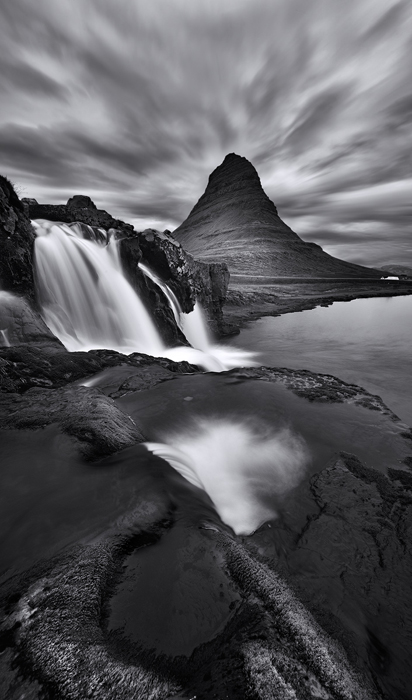 “Kirkjufell and Kirkjufellsfoss” by Mei Xu
“Kirkjufell and Kirkjufellsfoss” by Mei Xu
Every photographer probably has been inspired, in one way or another, by other photographers and/or their works. Do you have a particular favourite photographer? How has he/she inspired your photography? What specific things have you learned from his/her works? May you give us an example of this?
There are many photographers who have inspired me, such as all the members of 4aperture and photographers in 1x.com. Besides those famous photographers, Bob Reiman is another photographer who has influenced me the most. He is a photographer based in Colorado shooting with 4x5 films. He might not be known by many people, but he is my idol. My journey in exploring mountains around Colorado actually started from his light box. On his light box I saw hundreds of 4x5 films. I was astonished by those pictures which I haven't ever seen on any postcards, websites and books. They were all taken from remote areas where only few people are able to go.
Bob is an excellent hiker and refused to take pictures in National Parks and any popular photography places. His shooting spots must be 5 miles or further from the trail head. He believes the further away from the trail head, the more likely he will be able to capture his own unique photos. He told me "If that scene has been shot by many people, there is no reason for me to be one of the many people."
In his photo profile, you would never see Maroon Bells, which is the most photographic mountain in Colorado. He actually bushwhacked to the back of Maroon Bells to get the unusual shot of that mountain. He has always tried to find his own vision. He also has a high awareness of environment protection. No stove, no gas, or trace of his activity is present during his backpacking trips. His persistence on not repeating others’ work and conservation for the environment really inspired me. Although I am not as physically fit as he is, I often try to explore the lesser known areas as much as I can to find and shoot the unique shots.
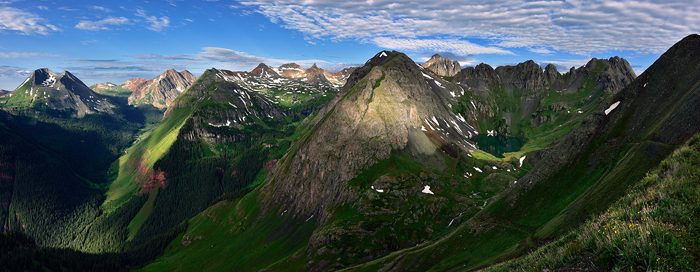 “San Juan Mountains” by Mei Xu
“San Juan Mountains” by Mei Xu
Let us talk about some technique issues in landscape photography. Firstly, Colorado Rocky Mountains are of relatively high altitude. There are many peaks that exceed 3000 meters. Since you are a local, you are probably used to such high altitude outdoor activities. But for someone from a low altitude region, how can he/she cope with such elevation change when pursuing mountain photography in the Colorado Mountains?
In terms of your photography practice, may you share with us your general workflow – both in the field and in post processing?
I live in Denver which is close to 1 mile above sea level; unfortunately, I still suffer from altitude sickness from time to time when I am at 12000 feet or higher elevation. Altitude sickness is an issue for most people if not for all. To be safe, I suggest that he/she comes to stay in Denver for a day or 2 to get acclimatized with the high elevation before heading up to the mountains. This approach seems to work pretty well for a few friends of mine who are from sea level cities. They came to Colorado this summer for wild flower photo shooting and they had no issues with altitude with this approach. They even hiked and summited the Handies Peak which is 14058 feet. This approach is also adopted by sport professional that come to compete in Colorado.
I use manual exposure and auto focus. I usually use f11 to f16 for the golden hour and blue hours and f2.8 to f5.6 for night scape. I usually try to shoot horizontal and vertical at the same spot to see which one works better. Nikon ViewNX2 is the software I used to upload raw files which I get in the field. I do subtle adjustments such as white balance and colour in this software. The pictures are then converted to TIFF. Photoshop and Lightroom are my next working stations for more adjustments. I usually keep adjusting a picture for a few days or weeks until I am satisfied.
Besides the Colorado Mountains, in recent years, you have also travelled to many other places for landscape photography, such as Iceland, Canadian Rocky Mountains, Patagonia, etc., what are other places you would like to go in to in the near future? What is your next photography goal? And how do you plan to achieve this goal?
As a landscape photographer, what general advice would you provide for someone who wants to enter this field – either as a professional or a serious enthusiast?
The more I became involved in landscape photography, the more beautiful places I discovered or learned from other photographers. There are too many places on my list. I would like to go to Norway, Antarctica, Europe and Africa, just to name a few. In the next few years, I plan to continue to explore more mountains in Colorado and use the drone to find new places.
A great image is a sort of miracle. Behind the miracle it is all about the hard work. As a landscape photographer, you need passion, patience, diligence and perseverance to accomplish those hard works. Sleeping in bed, you can have a dream, but to make the dreamscape a reality requires work and effort. Creativity is also a very important element for a great landscape photographer. In my opinion, creativity is the signature or identity of a photographer. To be a great photographer, his/her shots need to have their own visions and need to be different from others.
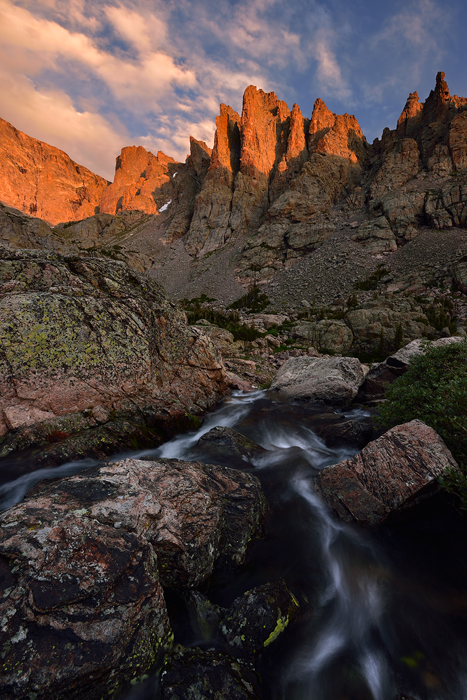 “Cathedral Spires Dawn” by Mei Xu
“Cathedral Spires Dawn” by Mei Xu
Thanks very much Mei, today’s interview is really exciting and informative. I am sure our audience will be inspired by your story and images. I wish you all the best in your photography journey.
About Mei Xu
Mei Xu is an enthusiastic, passionate and award-winning photographer based in beautiful Colorado. When she is travelling, hiking, skiing, the camera is her third eye to explore the wonder of the world and to capture the beauty of Mother Nature. Her photos and articles have been published in several renowned magazines and books all around the world which include National Geographic (Spain), Daily Mail (UK), Funke Media (Germany), Nature (China), Chinese National Travel (China) etc. Her fine arts have also been collected by individuals, companies and universities, such as Hilton Hotel, Oprah Winfrey founded Harpo Production, Capital One and University of Colorado, etc.
For viewing more of her works, please visit her website: meixuphotography.com
 | Write |
 | Ralf Stelander FOUNDER Excellent work Mei! Congrats! |
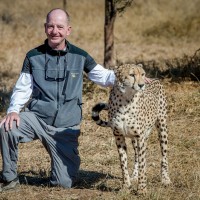 | Jeffrey C. Sink PRO This woman is so creative and her images are awe inspiring. Thanks for sharing. |
 | Mei Xu PRO Thank you very much, Jeffrey. |
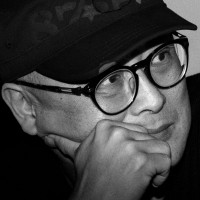 | Larry Deng APA PRO Love your stories and images dear Mei ++ |
 | Mei Xu PRO Thank you very much, Larry. |
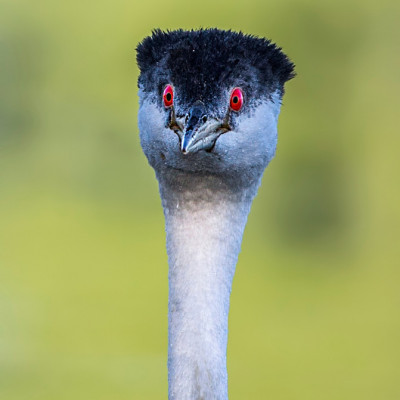 | verdon PRO Great reading as always, nice to know something more about you and Colorado, which is the place where I live too, keep up good work, Verdon! |
 | Mei Xu PRO Nice to know we all living in such beautiful state. Thanks! |
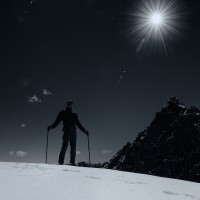 | Selions(陈磊) PRO Congrats Xu Mei!!!Ni men jiwei dashi dou tai lihai le! Professor Hu; A liu; Fan laoshi, haiyou ni,nimen dou tai lihai le !Shi fengguang jie de jiao ao!!!Wei nimen jiayou daqi!!! zai ci congratulation!!!! |
 | Mei Xu PRO Thank you so much for your special comments. 非常感谢! |
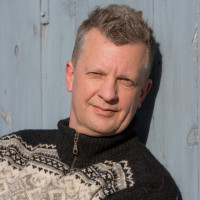 | The Jar - Geir Jartveit PRO Outstanding landscape photography, dear Mei. |
 | Mei Xu PRO Thank you very much, Geir.
|
 | MJoão Ferreira A photographer is an artist who lives a simple moment that carries the future, he's the one that catches the present and gives it the eternity.
The intimacy between the photographer and the world is revealed when he makes the shot. The world is huge but it can surely fit in the eyes of a photo. That's what a good photographer does and your photos are the best testimony of art. Congratulations! |
 | Mei Xu PRO Thank you very much, MJoão Ferreira. |
 | Yvette Depaepe CREW Outstanding landscape photography, dear Mei. All your images are "dreamscapes" indeed. Congratulations and thanks for sharing your story, my friend. Thanks to Yan Zhang too for leading this great interview. Cheers, Yvette |
 | Mei Xu PRO Thank you very much for your encouragement. |